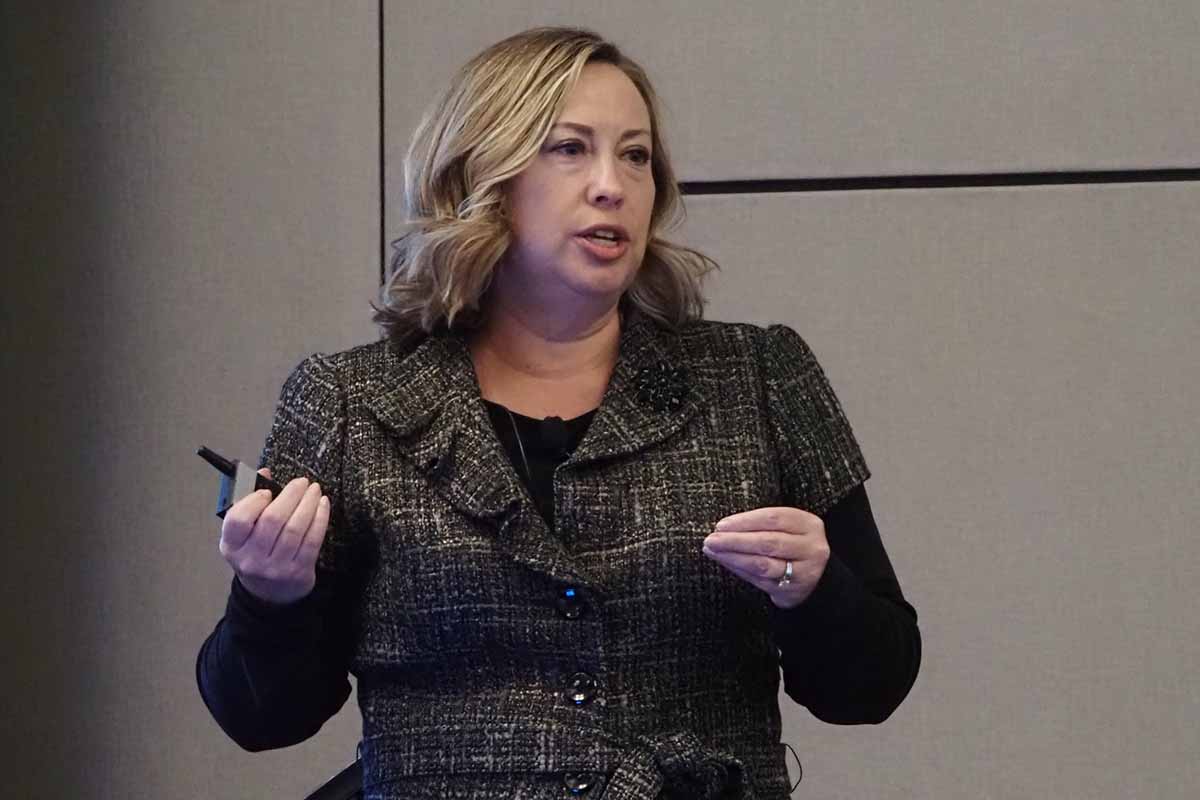
Lynn Dyer, executive director at Ameripen at APR’s fall meeting on October 22, 2025. | Photo courtesy Tan Sackett/APR
Lynn Dyer, executive director at Ameripen, opened her presentation at APR’s fall meeting with a reminder about packaging policy.
“First and foremost, we need to remember, why are we using packaging? It’s there to protect something. It’s there to contain something. So we can’t lose focus. We can’t be pushing policies that are going to ultimately not allow us to do that,” Dyer told attendees in Salt Lake City, Utah.
APR owns Resource Recycling, Inc., publisher of Plastics Recycling Update.
A major challenge is the patchwork of different state-level requirements that create compliance difficulties for companies.
“We are seeing inefficiencies because we have different states with different laws,” Dyer said. “How would we streamline some of those and how would we harmonize those that will ultimately benefit states and the industry as a whole?”
This is particularly evident in both EPR legislation and labeling requirements. Dyer pointed to California SB 343, which “has been concerning a number of different brands.”
“We’re starting to see more states mandate use of specific labeling on packaging products,” she said, noting that composting mandates also differ between states such as Colorado and Washington.
Varying state requirements ultimately creates confusion that filters down to consumers.
“We want to make sure that the consumer truly understands what we’re trying to do here … whether they need to recycle that product or not, or whether they need to compost that product,” Dyer said.
Many small and mid-sized companies are also unaware of or unprepared for EPR requirements, creating a compliance and education gap.
“Some customers have absolutely no idea. As soon as this hits, there are going to be so many people who are lost because they have absolutely no idea. We can go through and specifically target some of the small and medium-sized companies, because we think they need the most help,” Dyer said.
She noted that “the food brands tend to be the ones who know more about what has been going on. It’s the non-food, not large companies that we see the need right now to support and educate.”
Shifting perspectives on recycled content mandates
“The Ameripen position to date has been that we don’t support mandated recycled content because, frankly, many of the mandated recycled content legislation that we’ve seen has just been horrible,” Dyer said.
She spoke about a conversation with APR about finding common ground: exploring which products and resin types might be appropriate for recycled content requirements while understanding technical limitations.
APR, which has supported post-consumer recycled content (PCRC) policies since 2006, said that effective policies for plastic products should “target a broad range of products to drive innovation and growth across a wide range of plastic resins and applications,” including products such as household bins, curbside carts and pipes.
Legislation could boost the amount of recycled content in film plastics such as trash bags or packaging such as crates, pallets and trays.
APR’s newly-released “Key Components of Effective Plastic Recycled Content Legislation” outlines targets, strong verification, local sourcing incentives and flexible compliance options related to PCRC.
More stories about EPR/Stewardship